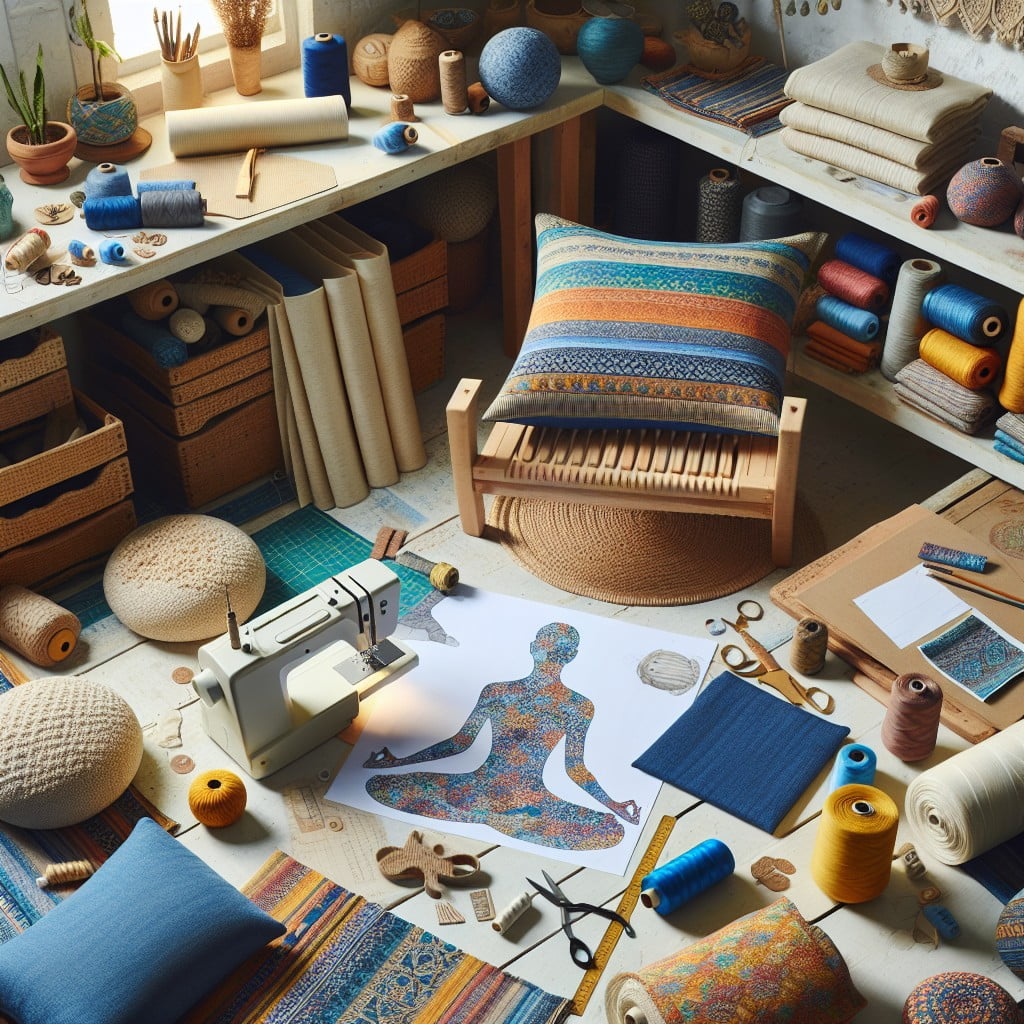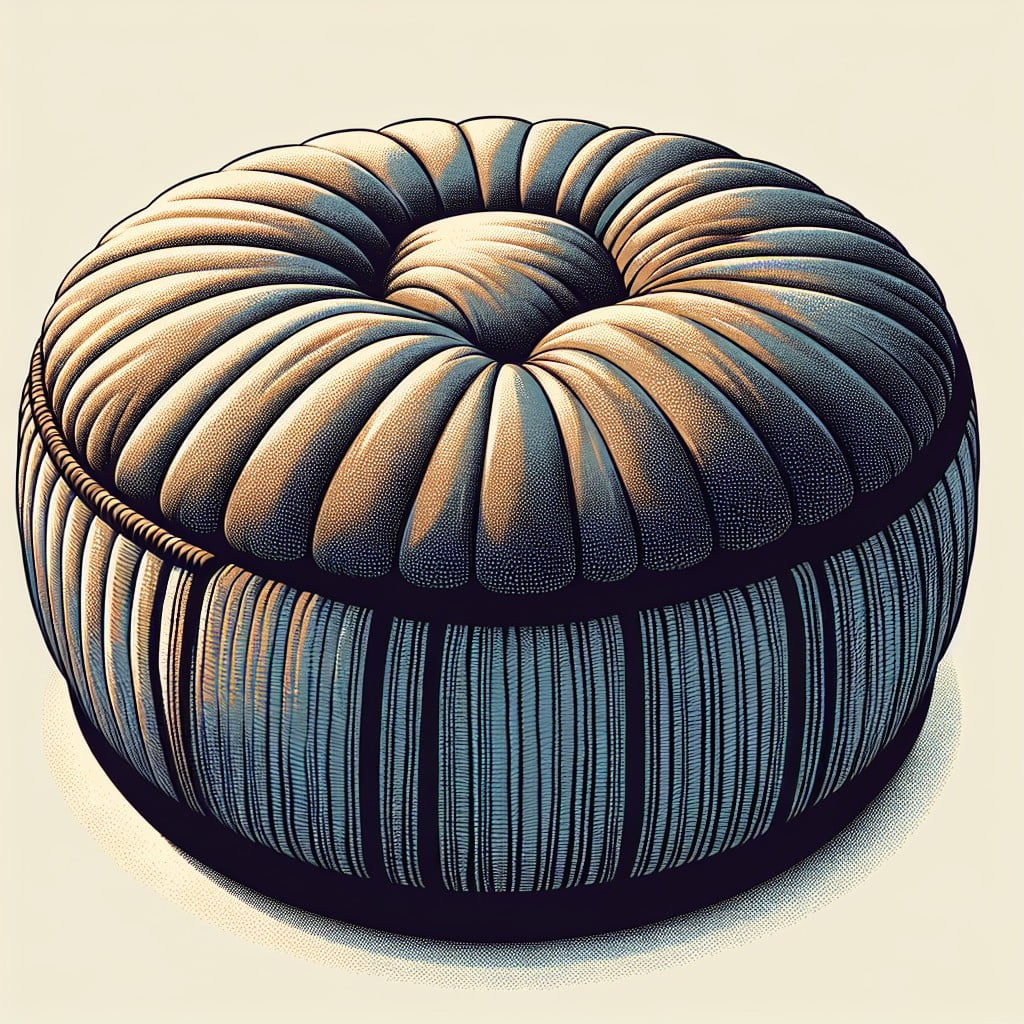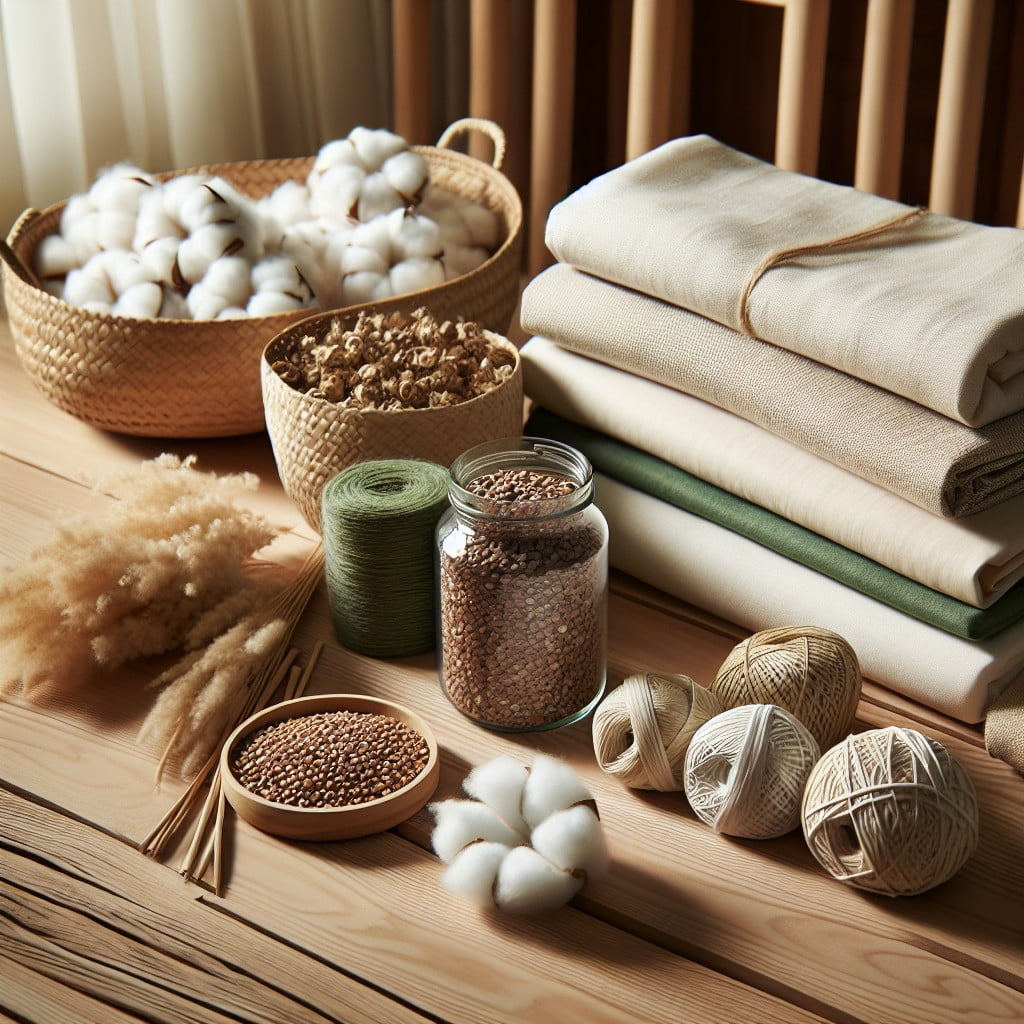Handcrafting your own meditation cushion is an empowering, mindful practice because it allows you to customize comfort that fits your form perfectly, paving the way for deeper, more focused meditation sessions.
Creating your own meditation cushion can be a fulfilling project, offering both a practical and personal touch to your mindfulness practice. This article provides a step-by-step guide on how to fashion a comfortable and supportive cushion customized to your needs.
From selecting the right materials, choosing the perfect filling, to the actual process of sewing and stuffing, every detail is meticulously covered. Follow along to craft a cushion that not only enhances your meditation experience but also resonates with your unique style.
Key takeaways:
- Handcrafting your own meditation cushion allows for customized comfort.
- Selecting the right materials and filling is essential.
- Follow step-by-step instructions to sew and stuff your cushion.
- Eco-friendly options for cushion materials include buckwheat hulls and recycled wool.
- Regular maintenance and proper storage will prolong the life of your cushion.
Materials Needed to Make a Meditation Cushion

First off, gather the necessary materials for this therapeutic crafting project. You’ll require heavy-duty fabric such as cotton or hemp, typically around 2 yards. This will cover both the outside and inside pillows. Thread of matching or contrasting color, depending on your taste, will be needed to join the pieces.
In terms of filling, traditional choices include kapok (a cotton-like substance), buckwheat hulls, or cotton batting which all provide a firm, supportive base. Remember the volume of your filling depends on the desired firmness.
Don’t forget to keep scissors, a sewing machine, and a measuring tape at hand for creation and assembly. Also, a standard zipper or drawstring can be incorporated for adjustable firmness. Lastly, a large bowl or plate will be used as a template for tracing your cushion shape onto the fabric.
These elements come together to form a simple, yet invaluable tool for your meditation practice.
Understanding What a Zafu Is

A Zafu, a term originating from Japan, is essentially a round cushion. Utilised extensively in meditation practices, it provides crucial support to the lower body, enhancing comfort and increasing focus.
Its specific design significantly promotes healthy posture, as it permits a cross-legged position with the knees comfortably touching the ground. By elevating the pelvis, the spine aligns naturally, encouraging relaxation and deeper concentration.
Found in a variety of sizes, materials, and finishes, Zafus can be customised based on individual preferences, ensuring optimal comfort for all.
Instructions for Creating Your Own Meditation Cushion

Start by selecting your fabric, it should be both durable and comfortable. Cut two circles – for the top and bottom of the cushion – plus one long rectangle that will work as the side panel.
Next, sew the side panel to one of the circles. Once that’s done, attach the other circle to the remaining open side of the side panel but leave a small part unsewn.
To fill your cushion, you could consider a mix of organic grains or natural fiber fillings. Kapok and buckwheat hulls are especially popular due to their firmness and durability.
Use the opening you left to stuff your cushion, making sure it’s dense enough to support your weight but soft enough for comfort.
Finally, sew up the remaining part of your cushion. Spend some time on this step to ensure your cushion is sealed and sturdy. A well-sewn cushion will not only last longer but also facilitate better, undisturbed meditation sessions.
Remember, the success in meditation doesn’t come from the cushion itself, but the consistency and comfort can facilitate a more focused practice. You may try different forms, sizes, and filling to find what best suits your individual needs.
Also, don’t forget to put some love and positive intention into every stitch – every bit of effort put into creating this space of calmness and clarity can enhance your meditation routine.
Eco-friendly Options for Cushion Materials

Several eco-friendly alternatives are available for filling your DIY meditation cushion. One prevalent option is buckwheat hulls, offering firm yet flexible support for long periods of sitting. It’s all-natural, organic, and highly durable.
Recycled wool is another excellent choice. The material is resilient, maintaining its original structure even after many uses. The temperate nature of wool makes it suitable for both hot and cold weather conditions.
Cotton batting, too, can serve as an eco-friendly stuffing, especially organic or recycled variety. Known for its softness, cotton batting provides a comfortable, plush feel.
Consider using old clothes, towels, or blankets as fillings if you’re seeking a truly sustainable solution. Such recycled textile fabric not only benefits the environment by reducing waste but also gives the cushion a personal touch.
Lastly, don’t forget to opt for natural, organic, or recycled fabric for the cushion cover. Materials such as hemp, organic cotton, or recycled polyester are environment-friendly and durable enough to withstand frequent use.
How to Properly Maintain Your Meditation Cushion
To ensure the longevity of your cushion, regular upkeep is an unavoidable necessity. Begin with a routine light dusting off to remove surface debris. Turning your cushion upside down and slightly patting it can help achieve this.
Wash the cushion cover, if it comes with a removable one, as per the fabric’s washing instructions. Avoid harsh chemicals, as they could degrade fabric and dyes quality over time. The gentle, eco-friendly detergents work best, preserving the fabric, duration, and color integrity.
For non-removable covers, spot cleaning with a damp cloth and mild soap mix is recommended. Then, let it air dry completely before using it again. Moisture in the cushion can degrade the filling, causing discomfort during meditation.
Regular checks for any wear and tear will help anticipate repairs before it’s too late. Small damages can always be fixed at home with basic sewing skills.
A proper storage location also plays a crucial role in maintaining your cushion. A cool, dry spot away from direct exposure to sunlight or moisture will prevent mold or discoloration.
Remember, your meditation cushion is much like any other item, the more you care for it, the longer it will serve its purpose. Your act of mindfulness in maintaining it also adds to the whole meditation experience.
Benefits of Using a Meditation Cushion
Meditation cushions provide important physical support for the body during meditation. They alleviate discomfort from sitting on hard surfaces, allowing for longer, uninterrupted sessions. They promote correct posture, maintaining the natural curve of the spine, often compromised when using chairs or flat cushions.
The cushion raises your hips, making cross-legged positions more comfortable and sustainable. This higher position helps in preventing legs from falling asleep and in reducing the strain on your knees, a common issue when sitting for extended periods.
Additionally, having a designated cushion creates a ritualistic aspect. Every time you get your cushion out, you’re signaling to your body and mind that it’s time to meditate, reinforcing the practice habit and setting the mood for tranquility.
Additional Resources for DIY Meditation Projects
Seeking more inspiration, techniques, and guidance pertaining to meditation crafts? Take your DIY journey a step further with the following resources:
1. Books: From “The Mindful Art of Wild Swimming” to “Mindfulness in Knitting,” explore a collection of books that blend mindfulness and craft activities.
2. Online Tutorials: Websites such as Instructables or YouTube offer a multitude of guides from making a meditation mat to constructing your Zen garden.
3. Workshops and Classes: Check out local community centres or adult education programs that might offer classes on meditative arts and crafts. Online learning platforms, like Skillshare or Udemy, can also be a treasure trove.
4. Meditation Craft Blogs and Podcasts: Bloggers and podcasters often share insights and step-by-step tutorials on various meditation DIY projects. These can be instrumental for learning and often come with handy visuals.
5. Social Media: Instagram, Pinterest, and other platforms abound with creative ideas and thriving communities eager to share their tips and projects related to meditation crafts.
Remember, there’s no limit to your creativity when it comes to enhancing your meditation experience. Keep exploring, keep crafting, and deepen your mindfulness journey!
Alternate Uses of a Meditation Cushion
A meditation cushion, also known as a Zafu, is not only for your mindfulness practices. This versatile tool can function in many unexpected, yet delightful, ways.
1. Yoga Prop: Instead of buying separate yoga blocks or bolsters, use your meditation cushion for added support during certain yoga poses, enhancing alignment and bolstering your practice.
2. Desk Chair: Replace your regular desk chair with a Zafu to encourage proper posture. This can help to reduce back pain and stress on your spinal column.
3. Floor Seating: Invite a unique and comfortable element to your living room or bedroom by utilizing it as a floor seat while reading, working, or socializing.
4. Outdoor events: Zafus can be fantastic companions on picnics or outdoor gatherings, providing a portable and comfortable seating option.
5. Sleeping aid: Used under the knees or ankles, they can help alleviate certain pressures, contributing to better sleep.
Remember, creativity is your limit when using a Zafu. Be sure to always maintain it well to lengthen its lifespan and ensure comfortable use regardless of the purpose.
FAQ
What are meditation cushions made of?
Meditation cushions are primarily made of either kapok, a fluffy plant fibre, or buckwheat hulls, and they contribute to stability in various cross-legged sitting positions.
How high should a meditation cushion be?
The optimal height of a meditation cushion is typically 13 cm, however, variations of 5, 9 and 17 cm are available and the right size depends on your height, build, and hip joint flexibility.
What do you fill zafu with?
Zafu cushions are traditionally filled with reed mace but modern ones are typically stuffed with buckwheat hull or organic kapok.
What are the different types of meditation cushions available?
Meditation cushions available include classic round zafus, crescent-shaped zafus, rectangular zabutons, inflatable cushions, and ergonomically designed cushions.
How does the firmness of a meditation cushion impact your practice?
The firmness of a meditation cushion impacts your practice by supporting correct postural alignment, aiding in relaxation, and enhancing the comfort level during extended periods of meditation.
Is there an ideal material for the outer cover of a meditation cushion?
Cotton or hemp are generally considered ideal materials for the outer cover of a meditation cushion due to their durability and comfort.